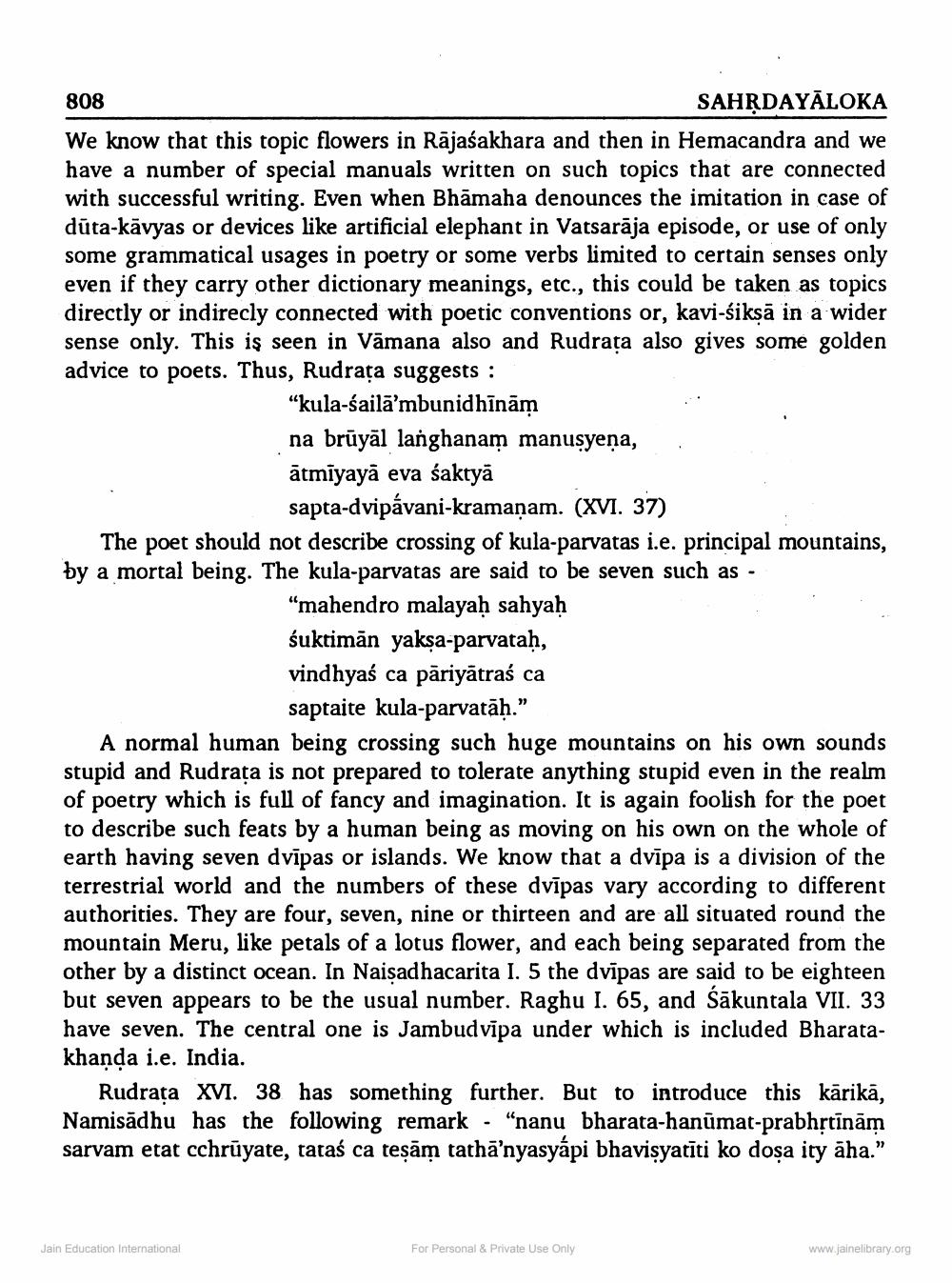________________
808
SAHRDAYĀLOKA We know that this topic flowers in Rājaśakhara and then in Hemacandra and we have a number of special manuals written on such topics that are connected with successful writing. Even when Bhāmaha denounces the imitation in case of dūta-kävyas or devices like artificial elephant in Vatsarāja episode, or use of only some grammatical usages in poetry or some verbs limited to certain senses only even if they carry other dictionary meanings, etc., this could be taken as topics directly or indirecly connected with poetic conventions or, kavi-siksa sense only. This is seen in Vamana also and Rudrata also gives some golden advice to poets. Thus, Rudrata suggests :
“kula-śailā’mbunidhīnām na brūyāl langhanam manusyena, . ātmīyayā eva saktyä
sapta-dvipávani-kramanam. (XVI. 37) The poet should not describe crossing of kula-parvatas i.e. principal mountains, by a mortal being. The kula-parvatas are said to be seven such as -
"mahendro malayaḥ sahyaḥ śuktimān yakşa-parvataḥ, vindhyaś ca pāriyātraś ca
saptaite kula-parvatāḥ." A normal human being crossing such huge mountains on his own sounds stupid and Rudrata is not prepared to tolerate anything stupid even in the realm of poetry which is full of fancy and imagination. It is again foolish for the poet to describe such feats by a human being as moving on his own on the whole of earth having seven dvipas or islands. We know that a dvīpa is a division of the terrestrial world and the numbers of these dvīpas vary according to different authorities. They are four, seven, nine or thirteen and are all situated round the mountain Meru, like petals of a lotus flower, and each being separated from the other by a distinct ocean. In Naisadhacarita I. 5 the dvīpas are said to be eighteen but seven appears to be the usual number. Raghu I. 65, and Sākuntala VII. 33 have seven. The central one is Jambudvipa under which is included Bharatakhanda i.e. India.
Rudrața XVI. 38 has something further. But to introduce this kārikā, Namisādhu has the following remark - "nanu bharata-hanumat-prabhrtīnām sarvam etat cchrūyate, tataś ca teşām tathā'nyasyapi bhavisyatīti ko dosa ity aha.”
Jain Education International
For Personal & Private Use Only
www.jainelibrary.org




